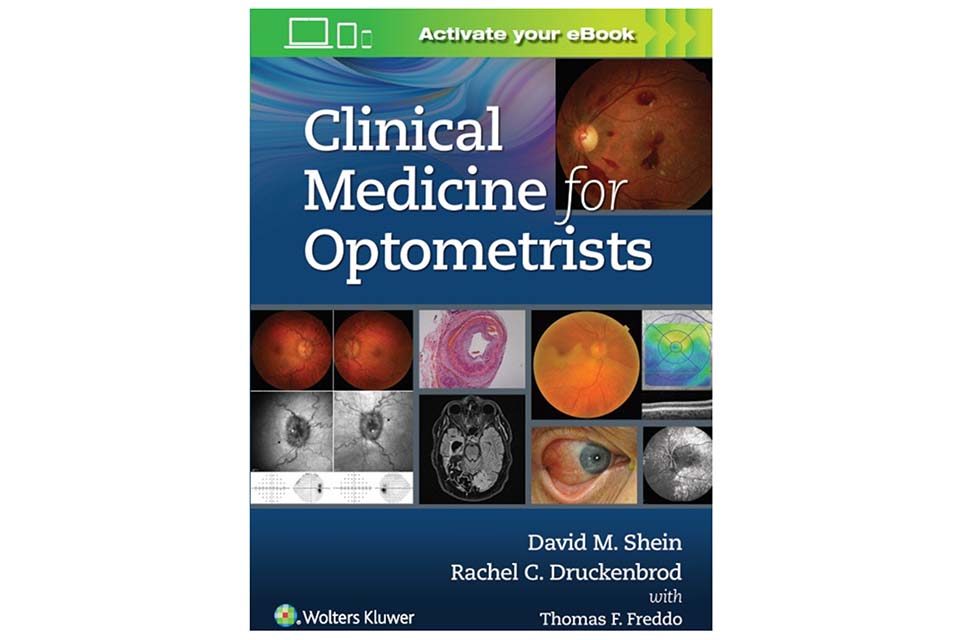Textbook authored by NECO faculty reinforces optometrist role as critical member of the healthcare team

Are ODs a GP’s new best friend? A new book by New England College of Optometry (NECO) faculty members reinforces the important role that optometry plays as an early beacon for diagnosing diseases that affect the whole body.
Co-authored by NECO Adjunct Professors David Shein, MD, and Rachel C. Druckenbrod, OD, FAAO, Clinical Medicine for Optometrists is a comprehensive guide designed to help optometry students and practitioners develop a foundation of knowledge for collaborative clinical care.
“Optometrists are the first line of eye care.” says Dr. Druckenbrod. “Because many diseases manifest in the eye, it’s very important for optometrists in all modes of practice to have an understanding of systemic disease, so they know when to get a primary care doctor involved.”
Preparing optometry students for this reality is critical. While instruction in clinical medicine is an integral part of the optometric curriculum, an up-to-date reference guide that presents diagnostic information about systemic diseases and treatment modalities, along with ocular manifestations of systemic disease, hasn’t existed for optometrists, according to Dr. Shein who originated the book idea. Clinical Medicine for Optometrists addresses that problem.
A major goal of the book is to bring a level of confidence to optometric practice based on medical knowledge. While it’s not uncommon for practitioners to detect optometric signs of chronic disease like hypertension or diabetes, eye exams will also sometimes detect more acute life-threatening conditions like stroke. In all cases, communication with a primary care provider can be very important for a patient’s overall health. “Having a common language can help optometrists become an integral part of the health care team and more integrated into medical patient care overall,” said Dr. Druckenbrod.
Clinical Medicine for Optometrists addresses other challenges of modern-day medicine. “Today, time for patient visits is limited. And while many doctors want to stay in their specialty areas, by being narrowly focused they only get a piece of the puzzle. Whether you’re a specialist or a generalist, you need to look at the big picture,” says Dr. Shein. “When prescribing ocular medications, optometrists can’t ignore patients’ cardiac, vascular or other diseases. It’s important for optometrists to understand the systemic manifestations. One key is having the knowledge.”
The new book provides that guidance and, as a result, can facilitate a more holistic and collaborative approach to medical care. It offers practical information that can help optometry students and practitioners recognize irregularities that indicate problems in a broad range of diseases. Clinical Medicine for Optometrists also describes how medical conditions like diabetes, thyroid disease, hypertension, rheumatoid arthritis, Crohn’s disease, infectious diseases, and many others can manifest in the eyes.
In delivering this knowledge the book enables optometrists to better communicate with primary care physicians or specialty providers, as well as deliver more comprehensive patient care. It gives students the essential medical knowledge they need scholastically and better prepares them for professional life ahead, while also serving as a valuable reference to optometrists in clinical practice.
Other NECO-affiliated contributors to the publication include Thomas Freddo, OD, PhD, who provided consultative and editing assistance, and Emily Humphreys, OD, FAAO, who co-authored a chapter on neuroimaging.
The publication will be released in January in print, eBook and audio book formats. It can be pre-ordered on Amazon.